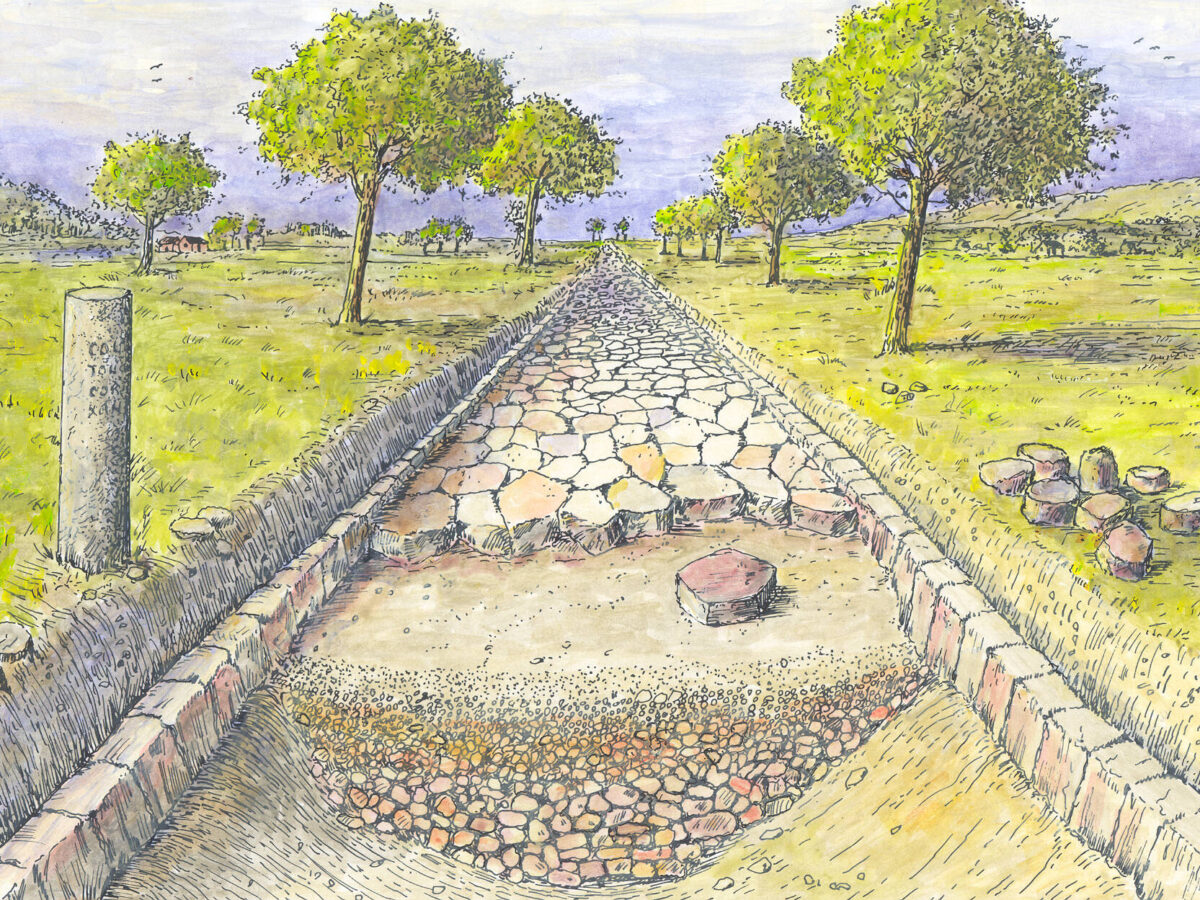Plan in Vetschau for the Construction of a Roman House
Author: Harry Lindelauf
Photography: Harry Lindelauf
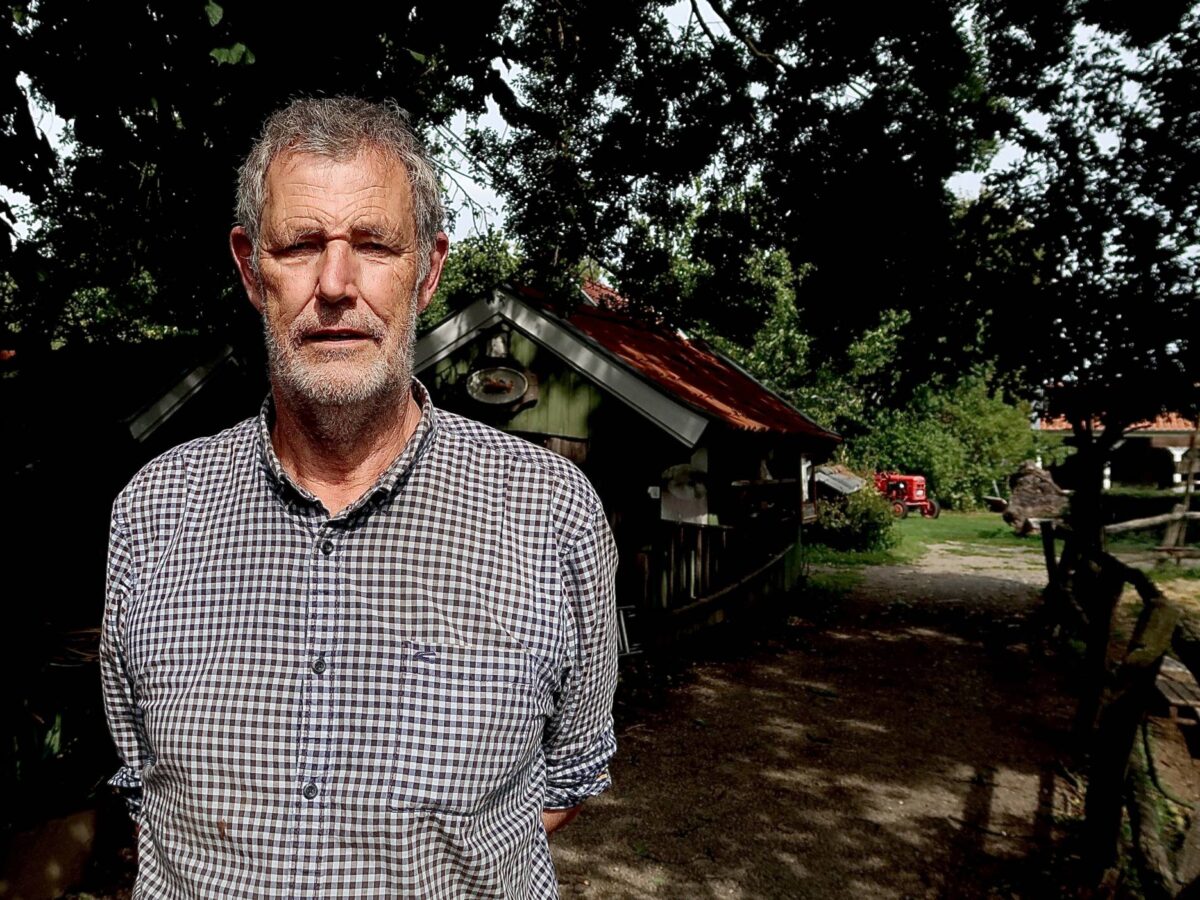
Let’s build a Roman residential and workshop house on the grounds of 4Linden in Vetschau — a place where students can learn ancient crafts in practice, and where visitors can experience Roman history through the building itself.
With this message, initiators Christiane Vaeßen, Honorary Consul of the Netherlands in Aachen, and architect Andreas Dilthey are advocating for the project in Aachen and the surrounding region. If the necessary funding can be secured, the Roman house will become a welcome addition to the Roman landscape park currently being developed in Simpelveld–Bocholtz.
Along the Via Traiana
Vetschau, located opposite the Roman valley of Bocholtz, lies directly on the Via Traiana, the Roman road between Heerlen and Aachen. The course of this road is still visible on aerial photographs as a straight line cutting through the landscape. It is even possible that part of the Roman road lies beneath the green oasis of 4Linden — the envisioned location for the Roman building project.
4Linden is a rural estate with a clear ideal: to bring people together and inspire new ideas on how we can live in balance with the earth. The site is centred around peace and harmony with nature.
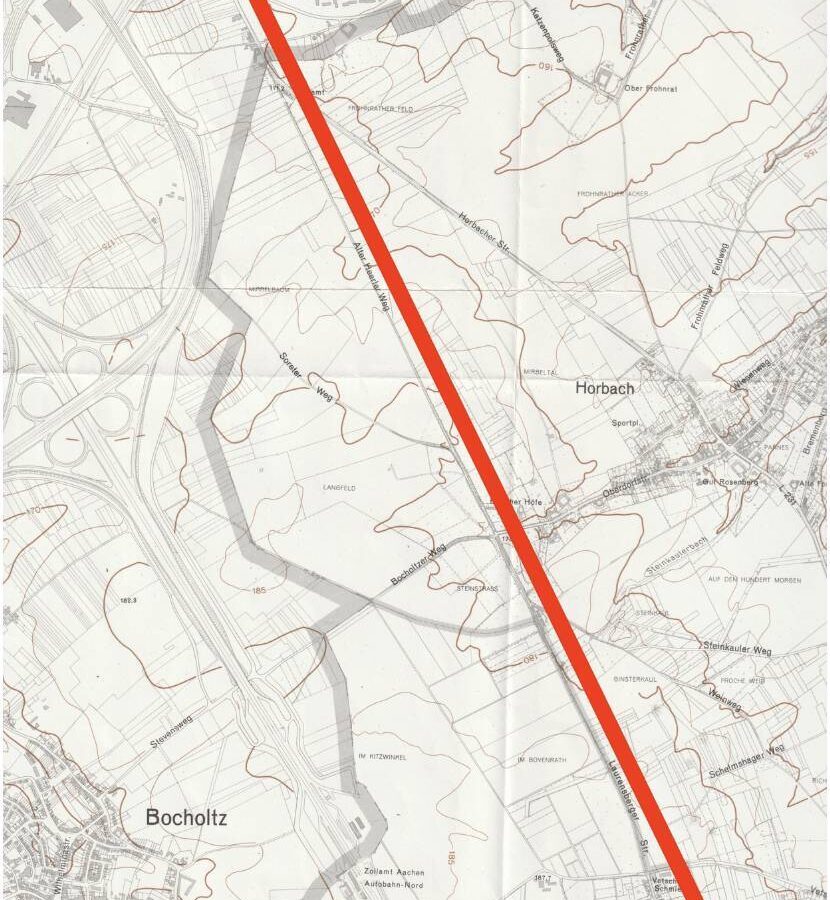

Classical Roman Construction
If the project goes ahead, 4Linden will gain a new Roman chapter with the construction of a house featuring a kitchen/living room, bedrooms, a veranda, a workshop, and a stable.
The design follows classical Roman building principles, based on examples known from excavations in the region. The walls stand on a base of local natural stone. The structure consists of an oak timber frame, filled with a wickerwork of reeds covered with a mixture of straw and clay — exactly the same method used in rural construction in the region until the 19th century.
The workshop and stable will be built with air-dried clay bricks, produced on-site.
Simple Solutions
An important goal of the project is collaboration with vocational schools in Aachen. During the construction of the Roman buildings, students will gain real hands-on experience. The range of work is broad enough to involve around twelve trades — including masons, carpenters, roofers, and furniture makers. Everyone will work with natural materials such as wood, straw, and clay.
Andreas Dilthey explains: “We want to show how people back then shaped and simplified their daily lives using the resources available to them — and that these same materials can still be used today. The crucial question is: what can we learn from the Romans today?”
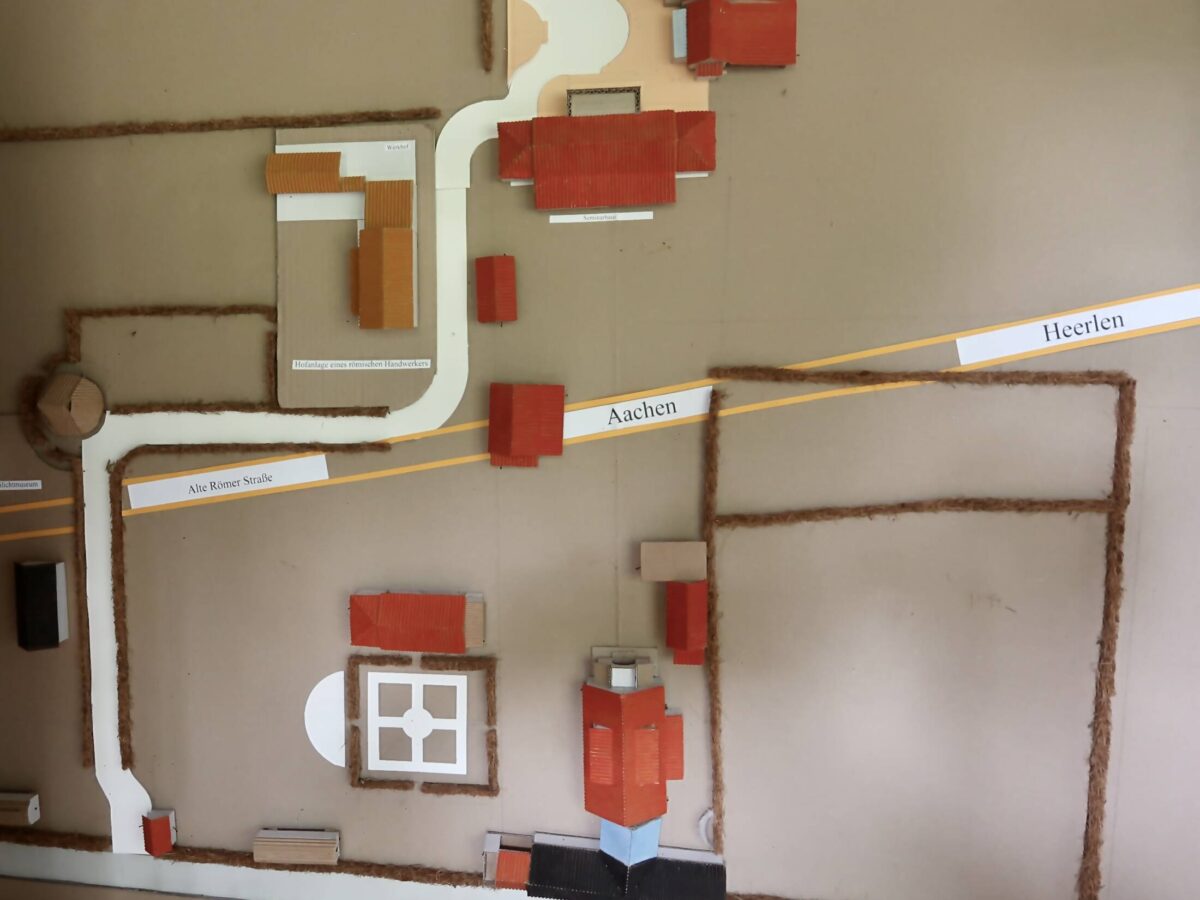
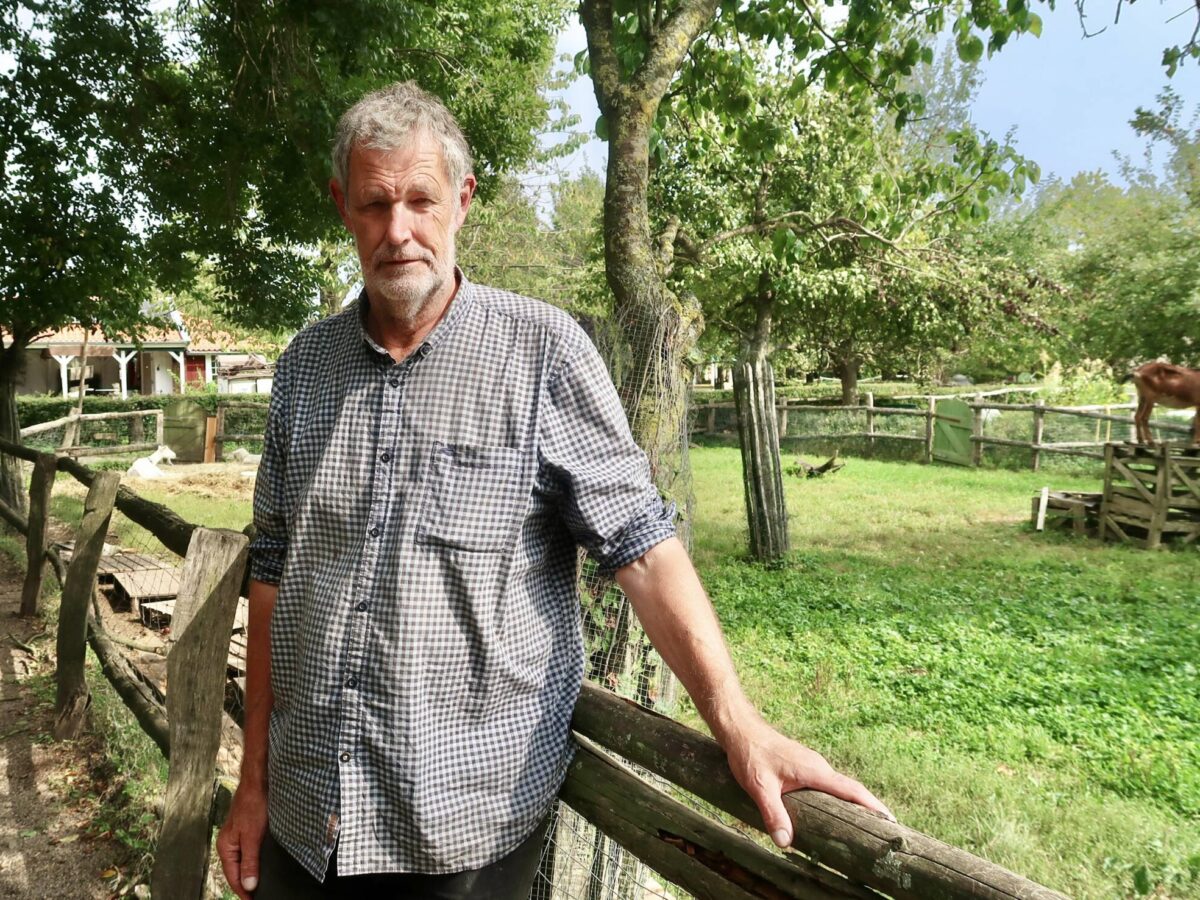
An Ideal Opportunity
“With the earth, not against it” has been Andreas Dilthey’s motto ever since his studies in architecture in Aachen. This means both building with natural materials such as clay and living in harmony with our planet.
At that time, he discovered an abandoned farm labourer’s house near his home: “It was a ruin. The roof had partly collapsed, and through the ceiling you could see the sky. When I tried to open the door, it fell in together with the frame. I didn’t want to study architecture only in theory — I wanted to learn it in practice. Above all, I wanted to discover how to build with clay. This project offered me the perfect opportunity to connect theory and practice.”
From his base in Vetschau, Dilthey worked for about 25 years as an architect and artist to support his family. Once his children were grown, he fulfilled his vision. As of 2025, he lives with eleven others at 4Linden, on the outskirts of Vetschau.
“My Answer to the Outside World”
At 4Linden, everything revolves around peace and harmony with nature. The site includes two houses, a café (open only on Sundays in summer), a hall for events, a museum dedicated to the life and work of farmers, a barn, a stable, a chapel, and three circus wagons. Between these buildings lie two vegetable gardens, a fruit orchard, and an herb garden. The residents keep donkeys, goats, chickens, geese, and ducks — all under the watchful eyes of two dogs.
Being as self-sufficient as possible and living in harmony with oneself and with nature — that is what Andreas Dilthey stands for: “Each year we consume 1.7 times the earth’s resources; Germany three times, and the United States even 5.1 times. It’s good to ask ourselves why we always want more. You can live a meaningful, harmonious life grounded in simplicity, beauty, abundance, and diversity. It’s possible — and 4Linden is my answer to the outside world.”
“The Crucial Question Is: What Can We Learn from the Romans Today?”— Andreas Dilthey
The Interreg Meuse–Rhine Programme has recognised the tourism project VIA VIA as a valuable initiative, with a total project budget of €4,567,252.40 and an ERDF contribution of €2,283,626.17.
The project is also supported by the European Union, with co-financing from the Ministry of Economic Affairs of North Rhine–Westphalia, the Province of Limburg, and the Regio Deal Parkstad Limburg.

